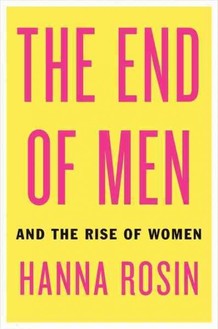
“The age of Men is over. The time of the Orc has come!”
—Gothmog, The Return of the King
Just as men were about to win the penultimate battle in their quest to retake Middle Earth, in J.R.R. Tolkien’s final volume of the “Lord of the Rings” trilogy, the forces of evil declared that the “age of men is over.” Yet, in the end, it was a lady, Éowyn, who made the decisive blow in that fictional battle, securing the rise of men to their rightful place as leaders of Middle Earth.
There are some disturbing parallels between the world of contemporary American men and women that Hanna Rosin depicts in her new book, The End of Men, and this fantasy scenario. The idea that men are in trouble isn’t necessarily new—we started hearing that boys were in “crisis” about 10 years ago, for example—but Rosin takes the argument one step further. The title of the book aside, her thesis is not so much about the end of men as it is about the rise of women.
But before we sign onto this simplistic and oddly appealing storyline, we might do well to take a closer look. It’s true that economic forces are creating serious challenges for U.S. workers and their families, and that men are having a hard time. But women’s ascension—measured by the share of women getting professional degrees or being a family breadwinner—does not necessarily signal the end of men. Indeed, it may be just as fair to argue that with all their overachieving, multitasking efforts, women are actually letting men off the hook, to women’s own detriment.
Yes, there are fewer men employed in the United States now than at any time since 1948 when the Bureau of Labor Statistics began keeping this data. And, yes, there has been only a slight increase in the share of men finishing college relative to 30 years ago. And, yes, male wages have stagnated since the end of the 1970s, with only a brief uptick during the booming 1990s.
And for their part, women have certainly made impressive gains. Over one-third of women ages 25 to 29 had earned a bachelor’s degree in 2011, up from one-fifth in 1980. As Rosin points out, the typical college campus is 60 percent female, if not more, and women now outpace men in earning baccalaureates and professional degrees. In cities, young, single, childless women outearn young men.
But dramatic as these statistics are, they don’t add up to a world of female domination. Women have known for a long time that to compete with men they need to outcompete them. Women have invested in education more so than men. Yet—shockingly—the gender pay gap has not budged in over a decade. Today if a young woman with a college diploma lands a job where a young man in the next cubicle has an equivalent diploma, he’ll still likely take home a bigger paycheck. And, as Rosin points out, if she complains, she’ll still, as in the past, be branded a “bitch.”
The male advantage holds up even when men move into traditionally female-dominated fields such as nursing or elementary school teaching, as they’re increasingly doing (one-third of the growth in male employment over the decade from 2000 to 2010 was in jobs that were at least 70 percent female, twice the share of the prior decade). Men tend to outearn women even in these jobs, taking advantage of the “glass escalator,” gliding up the job ladder fast as can be.
Maybe we need to take a closer look at men falling behind. No matter how well women prepare for the job market, they don’t seem to be able to bring home the male-sized paychecks, especially once they have children.
And while some have changed, most men still seem to have the power to keep themselves out of the kitchen and avoid the bulk of family caregiving. On the average day, fewer than one in five men do any form of housework such as cleaning or laundry, compared to nearly half of all women. Fathers spend about half as much time as mothers providing primary care to children. Unsurprisingly, men spend more time on hobbies and leisure activities than do women.
In other words: No matter what they’re earning, in terms of quality of life and clout, men are still coming out on top.
What has gotten harder for both men and women over the last few decades—and what we see reflected in the kinds of statistics on men’s nonprogress that Rosin and others invoke in order to back up their “end of men” theory—is the ability of a person without a college degree to earn a middle-class salary. These days this is also true of many college graduates: 20 percent of male college graduates, after four years of studying and tens of thousands of dollars in student loans, actually earn less than the typical high school graduate.
Also new (as of the past few decades): Families need two earners to make ends meet. The real change for the American family is that gone are the days where a young family could reasonably expect a higher income than their parents. And gone are the days when nearly all families could afford to have a full-time, stay-at-home caregiver, meaning that most workers today have responsibilities at home, too, although these tend to fall more so on women than men.
Rosin doesn’t acknowledge the very real and enduring power dynamics that, on the micro household level, allow many men to sit on their butts while women do it all, and on the macro level, lead to an enduring gender gap even as women have become more flexible. It may be that like Éowyn, today’s woman is slaying the beast, but the story ends with a man on the throne.
Heather Boushey is Senior Economist at American Progress.